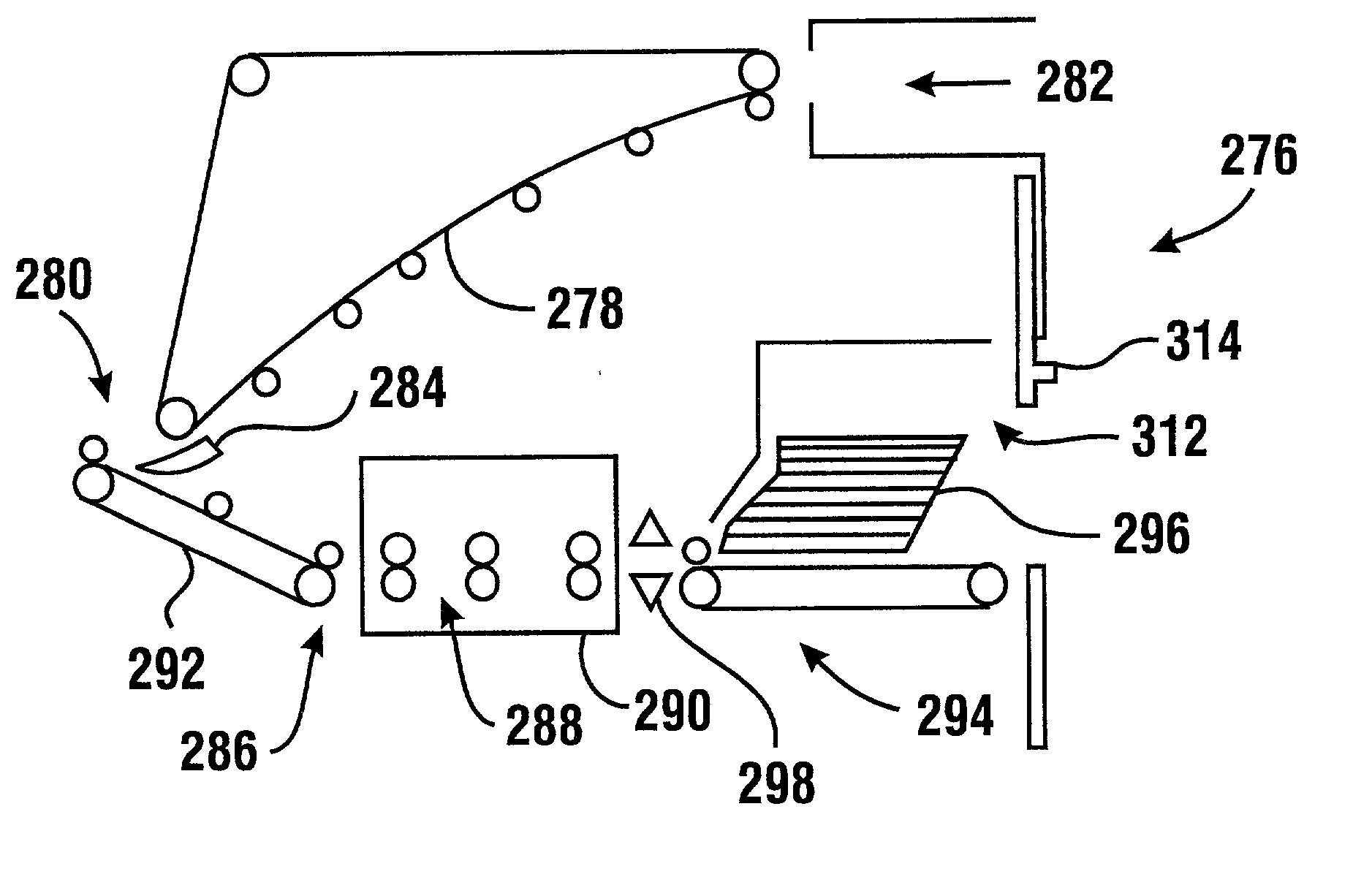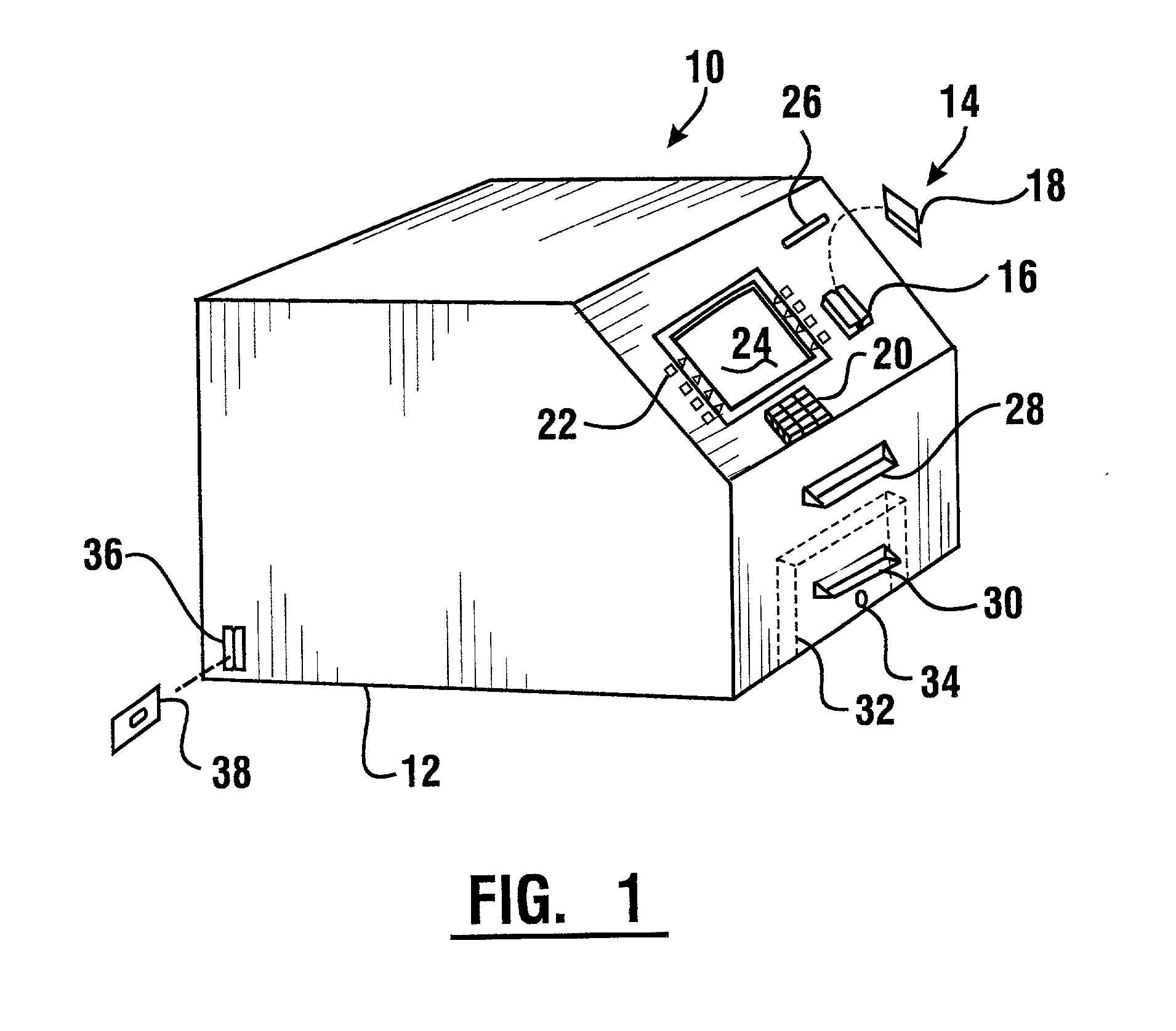Automated transaction machine with sheet accumulator and presenter mechanism
a technology of accumulator and presenter, which is applied in the direction of pile separation, transportation and packaging, instruments, etc., can solve the problems of reducing the production efficiency of accumulators, and reducing so as to reduce the cost of production and operation, the effect of easy installation and removal
- Summary
- Abstract
- Description
- Claims
- Application Information
AI Technical Summary
Benefits of technology
Problems solved by technology
Method used
Image
Examples
Embodiment Construction
[0098] Referring now to the drawings, and particularly FIG. 1 shown therein is an automated transaction machine of a first exemplary embodiment of the present invention generally indicated 10. The exemplary embodiment of a machine 10 illustrated in FIG. 1 is an automated teller machine whose primary functions are to dispense and receive currency notes. It should be understood however that other embodiments may be machines whose primary functions include conducting other types of transactions. These may include for example the dispense of motor fuel, the dispense of tickets, the dispense of vouchers, the dispense of gaming materials, the ordering or dispense of food items, the dispense of checks, the dispense of tobacco products or other functions that a user may carry out using the machine.
[0099] Machine 10 includes a housing 12. As used herein housing 12 refers to the external enclosure of the machine as well as the internal structures which support components of the machine therei...
PUM
| Property | Measurement | Unit |
|---|---|---|
| angle | aaaaa | aaaaa |
| angle | aaaaa | aaaaa |
| flexible | aaaaa | aaaaa |
Abstract
Description
Claims
Application Information
 Login to View More
Login to View More - R&D
- Intellectual Property
- Life Sciences
- Materials
- Tech Scout
- Unparalleled Data Quality
- Higher Quality Content
- 60% Fewer Hallucinations
Browse by: Latest US Patents, China's latest patents, Technical Efficacy Thesaurus, Application Domain, Technology Topic, Popular Technical Reports.
© 2025 PatSnap. All rights reserved.Legal|Privacy policy|Modern Slavery Act Transparency Statement|Sitemap|About US| Contact US: help@patsnap.com



